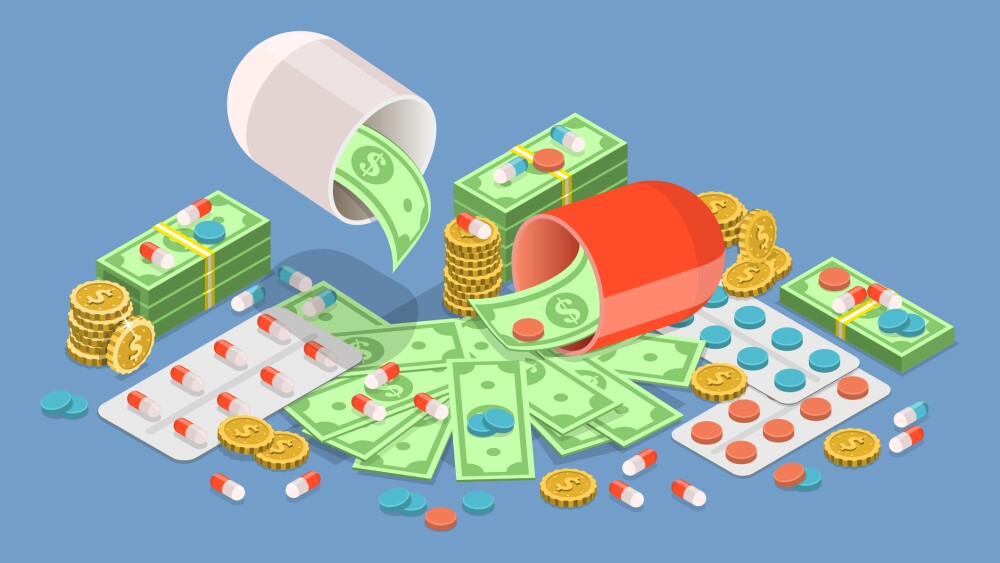Just what do those in favor of the H.R. 3 - organizations, individuals, companies and institutions - have to say?
As a December vote in the House on H.R. 3, the Elijah E. Cummings Lower Drug Costs Now Act (cited as the Lower Drug Costs Now Act of 2019) looms, there’s a great deal of interest from Medicare Part D enrollees and others affected by lower drug costs.
Just what do those in favor of the H.R. 3 - organizations, individuals, companies and institutions - have to say?
Here’s a sample
- AARP favors passage of H.R. 3 as one part of their Stop Rx Greed campaign. AARP quotes Ways and Means Chairman Richard Neal in a Nov 7 article on their site by Dena Bunis, AARP: “Patients in the United States, on average, pay four times as much as consumers in similar countries for the same prescriptions. All the while, drug companies continue to bring in tremendous profits. This is outrageous.”
In that same piece, Bunis writes, “House members critical of the legislation said it would inhibit research and development for new cures and medications, something supporters dispute. Mark Miller, a former executive director of the board that advises Medicare on policy issues, told Ways and Means members at last week’s hearing that pharmaceutical companies spend much more on marketing and other costs than on R&D and that they would still be profitable even if this measure were enacted.”
Nancy LeaMond, AARP executive president and chief advocacy and engagement officer urged the House to pass the legislation, which includes a cap on out-of-pocket prescription costs for Medicare Part D enrollees. She wrote, “There is no reason Americans should be paying the highest drug prices in the world.”
- American Hospital Association, on September 19, wrote of the benefit to patients who must choose between prescriptions and other expenses, “Outrageous drug prices force too many patients into rationing their drugs or leaving their prescriptions unfilled.” As such, they applaud the Lower Drug Costs Now Act. The reality of patient’s unable to afford their medication is made real to those working in hospitals and the healthcare system because they “… see the consequences first hand: patients coming back through our doors sicker than when they left.”
- Patients for Affordable Drugs (P4AD) writes, “The prescription drug pricing system in the U.S. is rigged against patients.” In Finding Solutions they write, “We have to break the monopoly pricing power of the drug corporations and demand transparency from pharmacy benefit managers who run drug insurance programs.” A key factor in this is the ability of Medicare to negotiate lower costs for patients. “Right now Medicare has to accept the price dictated by the drug company. Medicare can’t say no—no matter the cost.”
As part of a call for greater transparency in the pharmaceutical industry, P4AD calls for drug corporations to disclose the way they set prices. Specifically, how much is for R&D, marketing and advertising, and manufacturing and distribution. They also call for drugs that are funded by taxpayers in the form of funding for the NIH prior to patents are taken on the drugs, to benefit the taxpayers that funded those drugs.
- Henry A. Waxman - Chairman of Waxman Strategies, a public interest focused policy and public relations firm. Former U.S. representative for California’s 33rd district - as published in Health Affairs Blog. In his post, Lower Drug Costs Now, Waxman writes, “…The fact that we [Americans] spend twice as much on health care as the average for wealthy industrialized countries while having the lowest life expectancy and the highest infant mortality rates is a national disgrace.” He points out that in the period from July 2018 to July 2019, there was a 17% increase in the list price for more than 3,400 drugs. Especially disturbing? Even after taking a number of factors into account from 2012 to 2015, insulin costs per patient nearly doubled.
Waxman continues, “Why do these appalling price disparities exist? The primary reason is that every other industrialized country negotiates drug prices with the pharmaceutical industry, using their purchasing power to save taxpayer and consumer dollars. The drug companies, by their own admission, still earn profits in these countries – just not exorbitant windfalls.”
- The Editorial Board of The New York Times, comprised of opinion journalists, separate from the newsroom with views informed by expertise, research, debate and certain longstanding values,” published an Opinion piece titled The American Way of Paying for Drugs Isn’t Working on Nov 2. They wrote, “Under a new bill [HR 3], a handful of new drugs might never get produced. That would be worth it.”
In the enumeration of the proposed changes and potential risks under the new bill they write, “The pharmaceutical industry could lose as much as $1 trillion in profits over a decade, and as a result would bring roughly eight to 15 fewer drugs to market during that time period (out of the 300 or so that would be expected), the Congressional Budget office estimates. To understand why that’s a fair and worthwhile trade-off, it’s important to understand how the current system works.
After describing the workings of the U.S. and foreign drug development approaches, they conclude that, “Support for the same ideas [the government to negotiate directly with drugmakers and for the results of these negotiations to apply to private insurance as well as to Medicare] shrank when respondents were told that research and development would be imperiled as a result of these changes. That reluctance is not surprising, given the fearmongering that the pharmaceutical industry and its supporters in Congress have engaged in over this issue.”
What is the Basis for the Claims Made?
Just how much can be saved with a move to an indexed pricing strategy? The Ways and Means Committee Staff prepared a report on that very topic in September 2019. A Painful Pill to Swallow: U.S. vs. International Prescription Drug Prices describes the state of drug prices in the U.S. versus the rest of the world. Part III of our series will present those findings.
What are the Drugs Most Likely to Remain Undeveloped?
Part IV of our series on the Lower Drug Costs Now Act of 2019 will focus on the drugs least likely to make “the cut” if The Editorial Board of The New York Times is correct in their assessment of economics of the bill.
What are the Alternatives?
In Part V we’ll explore some of the alternatives to the Lower Drug Costs New Act.
The Fate of H.R. 3
The final article in our series will describe the path the bill followed to victory or defeat in the House, including attempts to alter the bill before the vote and the outcome of the vote.
Please click here for more information on our contributing writer, Gina Hagler.





